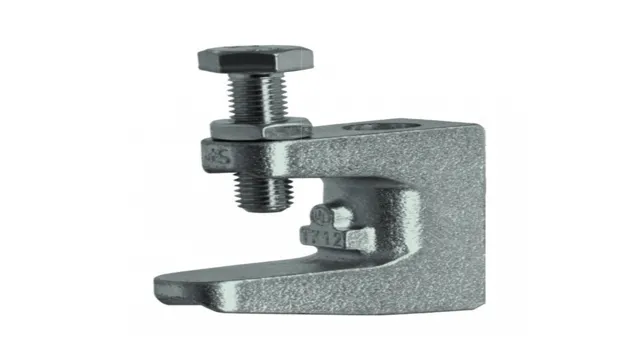How Long Should You Leave Clamps on Wood Glue for a Strong Bond?

Are you someone who loves to work with wood? If so, then you know the importance of using wood glue to ensure a strong and durable bond between pieces. However, if you’re not sure how long to leave clamps on the wood glue once applied, it can be a little confusing. But fear not, as we’re here to provide you with all the information you need to know when it comes to clamping time for wood glue.
Before we dive in, let’s first talk about the purpose of clamping when using wood glue. Clamps are used to apply pressure to the joints and hold the pieces of wood in place while the glue dries. This pressure helps to ensure that the bond is strong and the joint is tight, resulting in a sturdy and durable finished product.
Now, onto the clamping time. The recommended time to leave clamps on wood glue can vary depending on the type of wood glue used, climate conditions and the type of wood being used. Typically, most wood glues require at least 30 minutes to an hour of clamping time to form a strong bond.
However, some may require up to 24 hours for complete bonding, particularly if you’re working with tougher, denser hardwoods like oak or maple. It’s important to always check the manufacturer’s instructions for the specific wood glue you’re using, as they will provide you with the recommended clamping time. It’s also typically recommended to leave the clamps on for longer than the recommended time to ensure a stronger bond.
In summary, clamping time for wood glue can vary, but typically ranges from 30 minutes to 24 hours. Always refer to the manufacturer’s instructions for specific guidelines and consider leaving the clamps on for longer for a stronger bond. With these tips, you’ll be able to create sturdy and durable woodworking projects that will stand the test of time.
Importance of Clamping Time
When it comes to using wood glue, many people may underestimate the importance of clamping time. So, how long should you leave clamps on wood glue? The answer is that it depends on the type of wood glue being used and the size of the project. In general, most wood glues will need to be clamped for at least 30 minutes to an hour, although some may require up to 24 hours for full drying and curing.
It is important to follow the instructions on the label of the wood glue being used and ensure that enough time is taken for the glue to fully set before removing the clamps. If the clamps are removed too soon, the glue may not have fully cured, which can weaken the bond and lead to the project falling apart over time. So, take the time to properly clamp your woodworking projects and allow the glue to fully set for the strongest and longest-lasting bond possible.
Ensuring Proper Bonding
Ensuring Proper Bonding is crucial to the success of any bonding process. One essential factor that determines whether the bonding is successful or not is the Clamping Time. This refers to the time it takes for the adhesive to cure or dry, creating a secure bond.
The Clamping Time is determined by the type of adhesive being used, the type of surfaces being bonded, and the environmental conditions such as temperature and humidity. It is essential to follow the manufacturer’s instructions on the recommended Clamping Time to achieve the best results. Failure to do so may lead to a weak bond, which can result in product failure or safety hazards.
Therefore, giving the adhesive enough time to cure properly is crucial in ensuring a strong and reliable bond. Remember, taking shortcuts during the Clamping Time can be detrimental to the bonding process.

Clamping Time for Different Types of Wood Glue
When using wood glue, it is important to know how long to leave clamps on for maximum bond strength. Different types of wood glue have varying curing times, and it’s essential to understand the proper clamping time for each. For example, PVA glue, which is commonly used for woodworking, typically requires 30 minutes to an hour of clamping time.
On the other hand, polyurethane glue may need up to 24 hours of pressure to achieve its maximum hold. One way to determine when to remove clamps is to check the manufacturer’s instructions for recommended drying times. It’s also essential to consider the temperature and humidity in the surrounding environment, as these can affect the curing time of the glue.
Remember to be patient when working with wood glue and allow enough time for the glue to set and fully dry before handling the glued pieces. By following the proper clamping time for your specific type of glue, you’ll ensure the strongest bond possible for your woodworking projects.
PVA Glue
PVA Glue When it comes to woodworking, it’s important to choose the right type of glue for your project. One of the most popular options is PVA glue, also known as white glue or school glue. One of the advantages of PVA glue is its short clamping time.
This type of glue typically reaches full strength in just a few hours, which is ideal for projects that require a quick turnaround time. However, it’s important to note that the clamping time can vary depending on the type of wood you’re working with. For example, softwoods like pine or spruce require a shorter clamping time of around 30 minutes, while hardwoods like oak or maple may require a longer clamping time of up to 24 hours.
It’s also important to apply enough pressure when clamping the wood together to ensure a strong bond. With the right technique and attention to detail, PVA glue can be a reliable and efficient choice for all your woodworking projects.
Polyurethane Glue
When it comes to woodworking projects, choosing the right glue is just as important as selecting the right wood. There are numerous types of wood glue available, each with their own unique properties. One popular option is polyurethane glue, also known as Gorilla Glue.
This versatile glue can bond different types of materials, including wood, metal, and plastic. Polyurethane glue creates a strong, durable bond that is able to withstand even the toughest conditions. However, it is important to note that polyurethane glue has a longer clamping time compared to other types of wood glue.
On average, it takes about one hour for the glue to complete its initial curing process. This slow drying time can be advantageous when working on larger projects that require more time to adjust the pieces. Overall, polyurethane glue is a great option for woodworking projects that require a strong and durable bond, but it’s important to keep in mind that the longer clamping time should be taken into consideration.
Epoxy Glue
When it comes to woodworking, selecting the right type of glue is just as important as selecting the right type of wood. The clamping time for different types of wood glue can vary depending on the type of wood and the glue being used. For epoxy glue, the average clamping time is around 24 hours, making it an excellent choice for high-stress areas.
However, in cases where the wood is porous or not well-sanded, it may take longer for the epoxy to set properly. On the other hand, PVA glue is a popular choice among woodworkers due to its quick drying time, which ranges between 30 minutes to an hour. Although PVA glue is not as strong as epoxy glue, it is still an excellent choice for smaller projects.
Lastly, hide glue is a traditional type of glue that has been used by woodworkers for centuries. Its clamping time can range from 30 minutes to an hour, and it is an excellent choice for restoring antique furniture. In summary, selecting the right type of glue is a crucial step in any woodworking project, and understanding the clamping time for different types of wood glue is an essential consideration before starting any project.
Factors That Can Affect Clamping Time
One of the most common questions people ask is how long should they leave clamps on wood glue. It’s important to understand that the clamping time required for wood glue can vary depending on several factors. Firstly, the type of glue used can affect the clamping time.
Different types of wood glue have different set and bonding times. Secondly, the wood type can also impact clamping time. Some woods are more porous and absorbent, while others are denser and less absorbent.
The absorption rate can impact the amount of time required for the glue to set. The size of the surface area being glued together is another factor to consider. The larger the surface area, the longer it can take for the glue to bond fully.
Additionally, the temperature and humidity levels of the environment can also affect clamping time. Higher humidity levels can slow down the drying time, whereas warmer temperatures can speed it up. In general, most wood glue requires 30 minutes to 24 hours of clamping time for a secure bond.
However, it’s important to pay attention to the specific instructions on the glue bottle for optimal results.
Temperature and Humidity
When it comes to clamping time, there are several factors to consider, and one of the most important ones is temperature and humidity. Extreme temperatures, whether hot or cold, can affect the curing time of adhesives and make them less effective. If it’s too hot, the adhesive may cure too quickly, leading to a weaker bond.
On the other hand, if it’s too cold, the adhesive may take longer to cure, and the clamping time may need to be extended. Similarly, high humidity levels can slow down the curing process, as moisture can interfere with the adhesion process. It’s important to monitor temperature and humidity levels closely to ensure that the adhesive cures properly and maintains its strength.
Using a hygrometer to measure the relative humidity and a thermometer to measure the temperature can help ensure that the clamping time is appropriate for the environmental conditions. So, next time you’re in the midst of a project, make sure you’re checking the temperature and humidity levels to ensure that your adhesive cures effectively and that your clamping time is accurate.
Thickness of the Glue Layer
The thickness of the glue layer can play a significant role in determining the clamping time needed for a successful bond. Generally, thicker glue layers require more clamping time to ensure the bond sets properly. This is because thicker layers of glue take longer to dry and fully settle.
If you’re working with a thin layer of glue, you may only need a short clamping time, as the glue will dry and settle more quickly. However, if you’re working with a thicker layer, you’ll need to be patient and allow for a longer clamping time to ensure the bond is successful. Remember, rushing the clamping process can lead to a weak bond, which can ultimately lead to failure.
So, take the time to properly gauge the thickness of your glue layer and adjust your clamping time accordingly to ensure a strong and lasting bond.
Conclusion
In the wise words of famed philosopher and woodworking expert Ron Swanson, ‘ Never half-ass two things. Whole-ass one thing.’ So, when it comes to clamping your wood joints with glue, commit to it completely and leave those clamps on for the recommended amount of time.
Because in the end, there’s no substitute for a strong, well-bonded piece of woodwork that can stand the test of time (and the occasional enthusiastic puppy).
FAQs
How long should wood glue be clamped?
It is recommended to leave clamps on wood glue for at least 30 minutes to 1 hour, depending on the thickness of the wood and the type of glue used.
Can clamps be left on for too long?
Yes, leaving clamps on for too long can cause the wood to become misaligned and affect the overall strength of the joint. It’s important to follow the instructions provided by the glue manufacturer.
Can I remove clamps before the glue dries completely?
No, it’s important to leave the clamps on until the glue is fully dry. Removing them too soon can cause the joint to weaken or break.
What type of clamps should I use for wood glue?
It’s best to use bar or pipe clamps for wood glue, as they provide even pressure across the entire length of the board.
Can I use too many clamps on a joint?
Yes, using too many clamps can actually weaken the joint by causing the glue to squeeze out too much. It’s important to use just enough clamps to apply even pressure.
Can I use alternative methods instead of clamping for wood glue?
While clamping is the most effective way to ensure a strong bond, other methods like using weights or tying the joint with string can work in a pinch.
Do different types of wood glue require different clamping times?
Yes, different types of wood glue have different drying times and may require varying amounts of clamping time. It’s important to read the instructions provided by the glue manufacturer.



